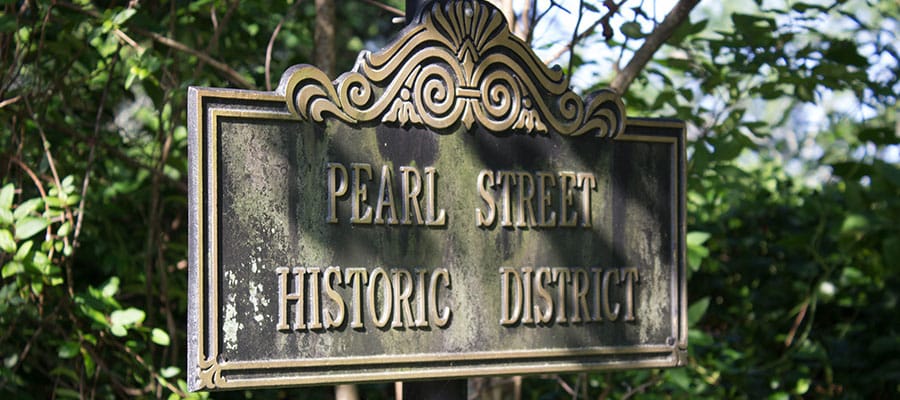
The History of Brandon
Prior to European settlement, the land on which Brandon sits was inhabited by Native Americans. The area was centrally located near the crossing of the north-south and the east-west Indian trails leading to various villages, and was used for council meetings and dances. With the advent of European exploration of the area, traders, missionaries, and early settlers camped near what is now the Town Square and the Busick Store lot. The best of overnight accommodations for man and livestock could be found at a trading post owned by D. W. Wilkerson in the early 1820s and 30s, known today as the “Old Bible Homestead” located on College Street south of the high school. The government bought the land from the Indians.
In 1828, as settlement continued, 31 residents of what is now Rankin County petitioned the Legislature to sever the part of Hinds County lying east of the Pearl River to form a new county. They did so because the river was a natural division, a stream characterized by an extensive swamp area, frequent floods, and few and difficult crossings. They asked for a seat of justice for the convenience of their inhabitants who were buying land, paying taxes, and conducting their business interests. The bill was approved and signed by the Governor on February 4, 1828, for the new County of Rankin, in memory of the late Christopher Rankin, a distinguished lawyer and politician who served Mississippi in Congress from 1819 until his death in 1826. The county seat was originally proposed to be Poindexter by a member of the Legislature. The name “Brandon” was chosen to honor the new Governor Gerard Chittocque Brandon. Soon, a survey for the Town of Brandon was completed and Brandon was established as a municipality.
The original 40-acre tract was a 1,320-foot by 1,320-foot square. Five lots in the Square sold for $500 in 1835. Once the boundaries of the city proper were set, it was 1948 before there was a major extension of those boundaries. Minor changes were made in 1886 and again in 1913. The next major extension was in 1978 when Crossgates was annexed.
In 1836, The Mississippi and Alabama Company was chartered to build a railroad from Jackson to Brandon. It was not in use until 1850, due to the panic of 1837 and the completion of a bridge across the Pearl River. Later, the railroad was relocated one mile north of Brandon in the area of Value where it runs today. Once the railroad was completed, cut rates encouraged riders, and people began to arrive in Brandon as tourists.
Brandon’s early life was severely disrupted by the Civil War beginning in 1861.
During the Civil War, Brandon felt the full wrath of the Union Army under command of General Sherman as it marched through Jackson to Vicksburg. Most of the town was burned by the Union soldiers. At the center of Brandon stands a monument of a Confederate soldier placed there in 1907 by the United Daughters of the Confederacy. The site of the monument is believed to be where General Sherman had his soldiers stack arms while they occupied the town.
There were bouts of massive yellow fever epidemics during reconstruction years (1871, 1878, 1888, 1893). 1878 was the worst, and many schools and churches closed. Brave citizens continued to rebuild and educate their children as the 19th century ended. Street lights were installed in 1911, and, in 1917, the City allocated a $5,000 bond issue at 6% interest for paving streets.
Tragedy struck again, in November of 1924, when a fire destroyed most of downtown Brandon, including the courthouse. During the Great Depression of the 1930s, times were hard in the entire country. Residents of Brandon, as well as Rankin County, did not feel the hunger as desperately as others, because it was an agrarian society and the rich farmland provided enough for the local population to survive.
The years following World War II marked a time of growth.
Brandon was proud of its heritage and offered Southern hospitality to its many visitors. Capitalizing on the theme of “Mississippi, The Hospitality State,” Brandon held yearly beauty contests to send representatives to the Miss Mississippi and Miss Hospitality contests. Local girls looked forward to the yearly activities. Mary Ann Mobley became the “sweetheart” of the United States when she captured the crown of Miss America in 1959. She was the first Mississippian to accomplish this feat and blazed the path for others to follow.
Brandon has been loved by many for generations.
In recent years, the City has been recognized increasingly as a high-quality small town. It has been named twice as a Top 100 Small Town in America by Forbes Magazine. As a result, growth and development pressures have motivated thoughtful study of how best to steward the City’s future. These efforts have included a Downtown Plan, comprehensive mobility plans, extensive park master planning and a comprehensive master plan.
Brandon’s Mary Ann Mobley Crowned Miss America
With a capacity crowd of 17,000 watching in the Atlantic City Convention Center and around 60 million watching on television, Brandon’s very own Mary Ann Mobley was crowned Miss America 1959. Mary Ann sang an opera, “Un bel Di” and a jazz song “There’ll be Some Changes Made.” Mary Ann later had a successful career on Broadway and made guest appearances on television shows like “Perry Mason” and “The Love Boat”.



